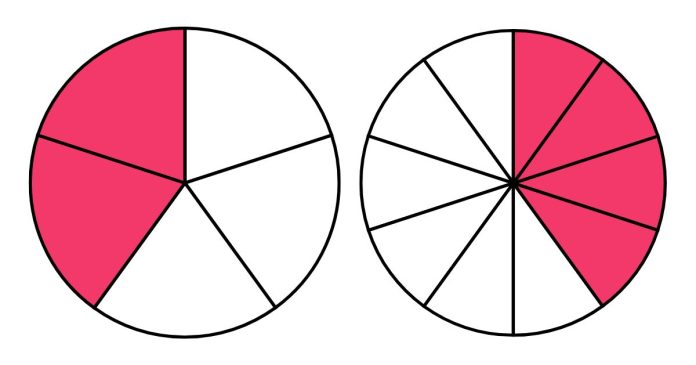Fractions are a fundamental part of mathematics and understanding their equivalence is key to simplifying expressions and solving problems. The fraction 4/10 can be reduced or compared to other fractions that represent the same value. Let’s explore what it means for fractions to be equivalent and determine the simplest form of 4/10.
What Does It Mean for Fractions to Be Equivalent?
Two fractions are equivalent if they represent the same portion of a whole, even if their numerators and denominators differ. For instance, ½ and 2/4 are equivalent because they both describe the same half of a whole.
Simplifying 4/10
To find an equivalent fraction in its simplest form, you divide the numerator and denominator by their greatest common factor (GCF):
- Identify the GCF of 4 and 10:
- Factors of 4: 1, 2, 4
- Factors of 10: 1, 2, 5, 10
- The GCF is 2.
- Divide both the numerator and denominator by their GCF:
Thus, the simplest form of 4/10 is 2/5.
Equivalent Fractions to 4/10
To find other equivalent fractions, you can multiply or divide both the numerator and denominator by the same nonzero number. For example:
- Multiply by 2:
- Multiply by 3:
Similarly, dividing by their GCF (as shown earlier) results in 2/5.
Visualizing Equivalent Fractions
Imagine a pie divided into 10 equal slices. If you shade 4 of these slices, you’ve shaded 4/10 of the pie. Now imagine the same pie divided into 5 equal slices instead. Shading 2 of those slices would cover the same amount of pie, showing that 4/10 is equivalent to 2/5.
Why Is Simplifying Fractions Important?
Simplifying fractions makes them easier to work with in calculations and comparisons. It helps in:
- Reducing complexity in mathematical operations.
- Understanding ratios and proportions.
- Comparing fractions effectively.
The fraction 4/10 is equivalent to 2/5 in its simplest form. By understanding how to simplify fractions and find equivalents, you gain a valuable skill for solving a wide range of mathematical problems. Remember, fractions like 8/20 or 12/30 are also equivalent to 4/10, demonstrating the flexibility of this concept in mathematics.


